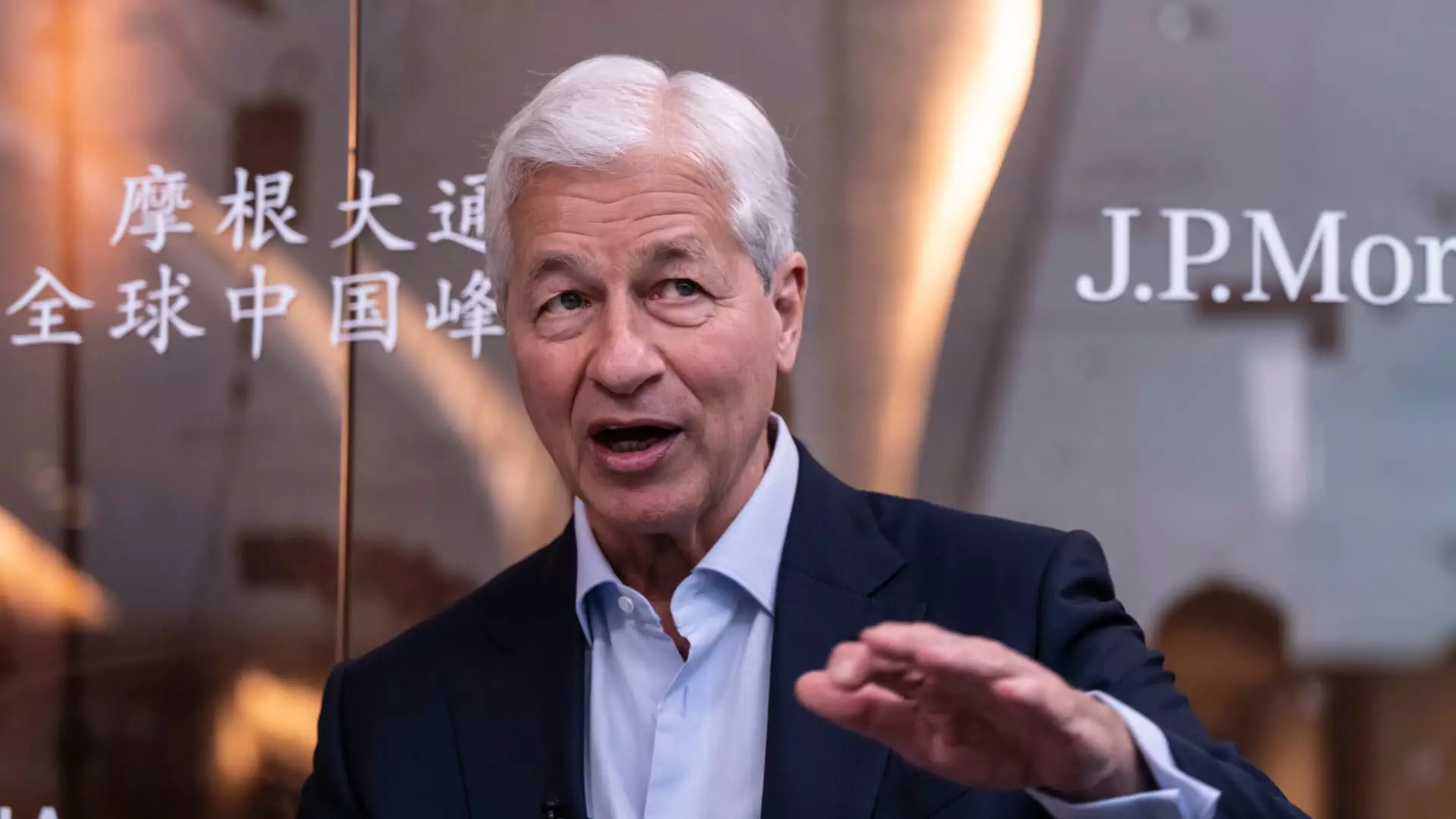In a surprising twist within the financial landscape, JPMorgan Chase is transforming its reputation from that of a cautious participant in online investing to being hailed as a potential leader. Gone are the days of playing catch-up; the bank is now poised to revolutionize the way retail investors engage with fixed income assets. This ambitious pivot reveals a strategic initiative that seeks to not only attract investors but to cement its stature among the titans of online brokerage—companies like Charles Schwab and Fidelity that have dominated the market for decades.
By integrating streamlined tools into its mobile app, JPMorgan is prioritizing user experience in a domain where complexity has often deterred potential investors. The introduction of features such as customized screens for bond research and yield comparison makes the process of buying bonds and brokered CDs as simple as checking account balances. It’s a pragmatic fusion of technology with user-centric philosophy—one that reflects a keen understanding of modern investment needs. As Paul Vienick, the head of online investing, emphasizes, the goal is straightforward: create a seamless purchasing experience for those interested in fixed income. This shift signifies more than just an upgrade of services; it’s an acknowledgment of a changing investor landscape.
Stumbling Blocks and Strategic Overhaul
Nevertheless, this transformation hasn’t come without its struggles. Once, JPMorgan’s attempts to penetrate the self-directed investing market, notably through its “You Invest” initiative, were met with lukewarm reception. Launched with high hopes in 2018, it soon became apparent that the offering fell short of attracting significant investor traction—prompting the bank to rebrand to the more straightforward “Self-Directed Investing” platform by 2021. The bank found itself grappling not only with product development but also with brand identity in an already crowded marketplace.
CEO Jamie Dimon’s candid assessment of the platform highlights an internal acknowledgement of the challenges faced. His statement, “we don’t even think it’s a very good product yet,” serves as a stark reminder of the competitive pressures and the necessity for constant evolution in the financial services sector. However, rather than retreating, JPMorgan took definitive steps to overhaul its investment strategy. Hiring seasoned professionals like Vienick from industry competitors was a pivotal move aimed at injecting fresh perspectives and expertise into a business that desperately needed revitalization.
Navigating the Competitive Landscape
In recognizing that merely providing basic online tools is no longer sufficient in the competitive brokerage space, JPMorgan has strategically focused on targeting investors who are actively engaged. This demographic, described by Vienick, includes individuals who execute trades multiple times a month and show a propensity for direct bond purchases. By appealing to these self-directed investors, the bank is not only widening its client base but also attempting to capture a more significant share of the $19 trillion held by affluent Americans—a demographic in which it currently holds a meager 10% share.
The banking giant’s self-directed platform is now incentivizing the transition of funds with offers of up to $700, a clear attempt to coax customers into consolidating their financial resources within the organization. In a world where consumer loyalty is fleeting and decisions are increasingly guided by user experience, JPMorgan is aware that building a singular financial ecosystem is essential to retain customers and deepen their relationships.
Embracing Digital Solutions for Modern Investors
The shift towards accommodating after-hours trading reflects JPMorgan’s understanding of modern investing habits and expectations. Investors today demand flexibility and a comprehensive suite of options at their fingertips. This venture into more dynamic trading solutions is a significant stride that aligns JPMorgan with current market trends—offering clients the capabilities they require to maneuver through today’s fast-paced financial climate.
Furthermore, Vienick’s confidence in the self-directed business’s potential to evolve into a trillion-dollar entity is a bold declaration that underscores a growing conviction within the firm. It indicates not just hope, but a clear strategic roadmap defined by hard work and commitment to improvement. With technologies advancing at breakneck speed and the investment landscape becoming increasingly competitive, one can only wonder if JPMorgan Chase’s newfound assertiveness will indeed yield the revolutionary results it aims for or serve merely as another chapter in its long story of challenges and adaptations.
As this financial behemoth navigates its transformation, it stands on the precipice of something much larger than itself—an opportunity to redefine the very essence of online investing with a focus on access, transparency, and user empowerment. In standing alongside both seasoned investors and those who are just beginning their financial journeys, JPMorgan’s ambitious changes may illustrate a pivotal moment in the evolution of investment engagement in the 21st century.


Leave a Reply